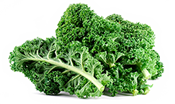Dairy
Tips for Making Wise Choices in the Dairy Group
-

- Include milk or calcium-fortified soymilk (soy beverage) as a beverage at meals. Choose fat-free or low-fat milk.
- If you usually drink whole milk, switch gradually to fat-free milk, to lower saturated fat and calories. Try reduced fat (2%), then low-fat (1%), and finally fat-free (skim).
- If you drink cappuccinos or lattes — ask for them with fat-free (skim) milk.
- Add fat-free or low-fat milk instead of water to oatmeal and hot cereals.
- Use fat-free or low-fat milk when making condensed cream soups (such as cream of tomato).
- Have fat-free or low-fat yogurt as a snack.
- Make a dip for fruits or vegetables from yogurt.
- Make fruit-yogurt smoothies in the blender.
- For dessert, make chocolate or butterscotch pudding with fat-free or low-fat milk.
- Top cut-up fruit with flavored yogurt for a quick dessert.
- Top casseroles, soups, stews, or vegetables with shredded reduced-fat or low-fat cheese.
- Top a baked potato with fat-free or low-fat yogurt.
-
Keep It Safe

- Avoid raw (unpasteurized) milk or any products made from unpasteurized milk.
- Chill (refrigerate) perishable food promptly and defrost foods properly. Refrigerate or freeze perishables, prepared food and leftovers as soon as possible. If food has been left at temperatures between 40° and 140° F for more than two hours, discard it, even though it may look and smell good.
- Separate raw, cooked and ready-to-eat foods.
-
For Those Who Choose Not to Consume Milk Products
- If you avoid milk because of lactose intolerance, the most reliable way to get the health benefits of dairy products is to choose lactose-free alternatives within the Dairy Group, such as cheese, yogurt, lactose-free milk, or calcium-fortified soymilk (soy beverage) or to consume the enzyme lactase before consuming milk.
- Calcium choices for those who do not consume dairy products include:

- Calcium fortified juices, cereals, breads, rice milk, or almond milk.
- Canned fish (sardines, salmon with bones) soybeans and other soy products (tofu made with calcium sulfate, soy yogurt, tempeh), some other beans, and some leafy greens (collard and turnip greens, kale, bok choy). The amount of calcium that can be absorbed from these foods varies.
Key Consumer Message
Switch to fat-free or low-fat (1%) milk.